Lars Martinson's Blog, page 11
December 3, 2011
Upcoming Appearances in Central Japan
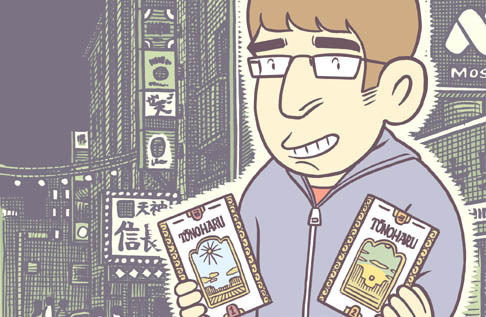
I have two appearances coming up this month in Japan, if anyone's interested:
On Sunday, December 11, 2011, I'll be in Nagoya taking part in a panel discussion/release party for Aftershock: Artists Respond to Disaster in Japan, an anthology to benefit Japan disaster relief. The Facebook event page with all the details can be found here:
http://www.facebook.com/events/285808968131016/
Then on Saturday, December 17, 2011, I'll be at the Tokushima Museum of Literature & Calligraphy ( 徳島県立文学書道館 ). This is in conjunction with a calligraphy show that runs from 12/16 ~ 12/18. Don't miss your big chance to see a piece of my sub-par calligraphy! I'm not sure what times I'll be there to and from, but I'll update with that later.
There doesn't seem to be an online event page for the show, but the website for the museum can be found here (Japanese only):
http://www.bungakushodo.jp/index.html
Hope to see you there!
November 22, 2011
Aftershock: Artists Respond to Disaster in Japan
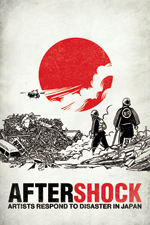
It's been more than two months since my last update. I don't know how many regular readers I have, but based on my Google Analytics reports, it's probably just a couple-few dozen. So to those tens of people,my apologies for not delivering on the weekly updates that are promised on the masthead of this website. What can I say? The full time job has taken a lot out of me, so something had to give. The next couple weeks are super busy so I probably won't update for a while, but from here on out I'm going to try to update at least once a month (yeesh, talk about a low bar). The end of December should be pretty slow, so I should be able to update more frequently then, for a while at least.
But I digress. What inspired me to get off my butt and update after ten weeks was I wanted to let you all know that Aftershock: Artists Respond to Disaster in Japan, the comics anthology I contributed to, is finally available in paperback. 100% of the proceeds will be donated to relief efforts to the disasters that befell northeast Japan in March of this year. So please consider ordering a copy here:
http://www.biguglyrobot.net/mailorder/
Thanks!!
September 12, 2011
Kameoka in Brief
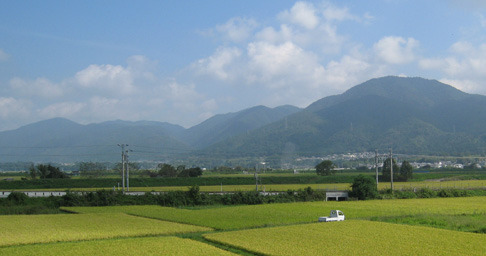
Pictured: A two minute walk from my apartment.
To all the HUNDREDS of THOUSANDS of people reading this, sorry this entry is so late in coming. Between moving/settling in/getting sick/trying to prepare for lessons, I just never had the energy to do much of anything other than what was strictly demanded of me. Even now after taking the last couple weeks off, I still only really have time to phone in a quick entry. Hopefully once I've settled into a routine I'll be able to devote more time to describing my experience here in this blog, but for now I'll just write a few paragraphs on borrowed time.
Things have been busy but pleasant (other than getting sick). Classes started a week ago Wednesday. I'm teaching at 11 different schools; two junior highs and a bunch of elementarys. Some of the elementarys are way off in the country; the hour-long commutes though pine-covered mountain valleys will probably be pleasant once I know where I'm going, but I have to admit I'm not looking forward to trying to figure out the routes to each school the first time. I have a few schools within walking/biking distance, but the rest require a complicated series of bus transfers and being picked up by teachers at different times and places. I can't imagine trying to navigate it without Japanese reading/speaking ability. Again, once I settle in and know where I'm going it'll be fine, but in the meantime it'll be a bit stressful.
So far I've visited one of the junior highs and one of the elementarys, and have had a bunch of great classes so far. I'm sure eventually I'll have a few nightmare classes, but so far it's been great. It'll probably be a few months before I'm *completely* settled into teaching again, but for the most part I already feel like I'm already back into the groove.
Okay! I'd like to write more, but I'll have to save it for another time; I've got a really busy day tomorrow, so I need to rest up for that. I have two three-day weekends coming up back-to-back, so hopefully I can write more then. Cheers!
August 26, 2011
Out Sick
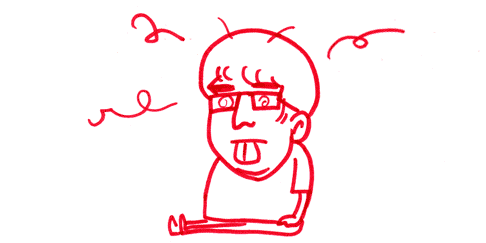
I've been fighting off a nasty cold for most of the week, so no blog entry today. Next Friday, hopefully!
August 19, 2011
"Tonoharu: Part Three" Progress Report

Progress Bar Key
Script/Story: The Story/Script for the comic
Artwork: The Drawing, Inking, and Computer Work for the comic
Final Edits/Incidentals: Post-Production Edits, Designing the Cover, Preparing for Press, etc.
(More information about Tonoharu can be found here.)
****
I haven't done one yet, so I figured it was high time I put up a progress report for Tonoharu: Part Three.
I've been putting it off because I wanted to wait until the artwork was 25% done, because that felt like a worthy enough milestone to document. Or even 20% would've been good, since that would have been a nice round number.
But with all the packing and sorting for my move to Japan, I haven't made any real progress on the book for the past few weeks, and now that I'm in Japan settling into a new life/job here, it'll probably be a couple weeks before I can get back into work on Part Three. So I thought to heck with it. Rather than wait for a milestone percentage, may as well just update now.
Now that the script is mostly done, I can give you a fairly accurate page count: I'm thinking 115 pages, give or take a couple. This will put the book between Part One and Two lengthwise.
So the million dollar question is: what's my projection to complete the book? And the unsatisfying answer is: I have no idea. Now that I have a "real" job again, that will take priority, and eat up a big chunk of my day. But on the other hand, I still am committed to working on Tonoharu: Part Three in evenings and weekends, so I hope to continue to make steady progress. I'll probably have a better idea once I've had a chance to settle into my new life here, and can see how much time I'm able to devote to the book during my off hours. Look for that in my next progress report a few months from now.
But if you're just dying for more frequent updates, I post on my Twitter feed every time I finish a page, so follow me there if you want to follow my progress in excruciating detail:
My Twitter Account
*****
Next week I plan to blog about my new home in Japan, so stop by next Friday for that!
August 12, 2011
Interview from "Standard" Magazine
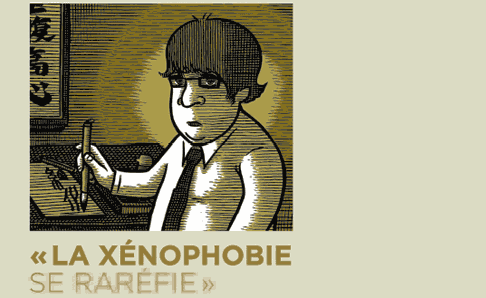
The following interview ran in the French magazine Standard. It was translated into French (obviously), so the original English version has never been published. The interviewer, Jean-Emmanuel Dubois, was kind enough to allow me to put up the English version here. So here it is:
To what extent Daniel Wells is you?
I share some qualities with the character. Like Dan I'm introverted and somewhat socially awkward. And the situation I put him in—working as an assistant English teacher at a rural Japanese junior high school—was in large part based on my own experience. But I wouldn't say Dan is an avatar for myself, contrary to what many readers seem to believe. I borrowed from aspects of my own personality in creating the character, but that's true for all the characters in the book.
To you ever think of going back to Japan? Where do you live now and why?
Right now I live in Minneapolis, USA. It's where I was raised, and serves as a "home base" of sorts between trips abroad. I'll be heading back to Japan this July. In the past decade I've spent as much time in Japan as I have in the States, and it really feels like a second home now.
Is the town you live in was touched by the earthquake, the Tsunami and the Fukushima disaster? Do you still have contacts in Tonoharu? If so what did they told you?
I lived primarily in central and southern Japan, which was far enough away to escape the devastation. My friends in Japan were distraught over the events (as we all were) but thankfully no one I knew was injured.
Why did you decide not to translate what the Japanese people were saying?
Originally I planned to include translations, but as I looked over the script I realized it worked better without them. Leaving the Japanese untranslated more viscerally expresses the sense of profound isolation you experience when you literally have no idea what everyone around you is saying.
What's your favorite comics or mangas about expatriate people or about exile or exodus?
One of the main reasons I originally wanted to create Tonoharu was because of the dearth of comics (and movies and tv shows for that matter) that tackled the experience of living abroad in an honest way. I hoped Tonoharu would help fill that gap. Since then I've become aware of a few good comics that deal with the expat experience; the work of Joe Sacco and Guy Delisle comes to mind.
Did you suffer during your stay in Japan of anti-American feelings? Did you meet any Japanese expatriate in the USA and did their friends and family blamed them to go to settle down in a historical enemy land?
Other American expats would sometimes complain that old Japanese ladies would glare at them on the train or whatever, but I personally never really noticed a strong anti-American/anti-foreigner sentiment. There was a Japanese guy who worked at my board of education who was always trying to talk to me about American military bases in Japan, but I never sensed hostility from him per se (just a creepy intensity). Likewise, I can't think of any Japanese friends who've lived in the US who got flak about it. I think those xenophobic prejudices are becoming rarer, especially among members of the younger generations. I guess my grandmother was really surprised when I described how well I was treated in Japan. I think her understanding of the country was mostly informed by World War II propaganda, which paints a distorted picture to say the least.
In the first volume the relationship with the Japanese teacher seems a bit awkward and at the same time some American male are quite sexist toward Japanese women-What was in real life your relationship and your love life with Japanese women? What did you learn? What are the main differences between US males & Japanese women in your opinion?
Japanese society is still quite male-centric; the whole "ladies first" idea was never a part of the traditional culture. Japanese men expect a measure of deference from their girlfriends and wives that would be considered unacceptable in the West. So I think Japanese women tend to idealize American and European men, imagining them to be chivalrous romantics. Some Western men take advantage of this rose-colored perception to lascivious ends. I'd like to think that I wasn't among them, but I'll admit that it made dating easier. All I had to do was open a door or do the dishes every once in a while, and it was like I was Prince Charming.
What's your main graphic & storytelling influences?
My influences are probably pretty predicable to anyone who knows even a little about alternative comics and cinema. On the comics side, Chris Ware, Seth and Daniel Clowes have all played a big role. For movies, I'm a big fan of Wong Kar-wai and the Coen Brothers, and their work has probably had some influence on my own. Like I say, pretty predictable.
Your comic is very sophisticated and graphically follow a lot of rules (like all the panels getting the same size, no black borders) what make you follow that path?
My overriding design principle was trying to maximize readability. I try to keep things consistent and straightforward unless there was a good reason for deviation. Readability isn't sexy, but it's important for longer books. Some comics have flashy layouts and character designs that look good, but don't read good. Reading them is actually tedious. For Tonoharu, I didn't want the format and presentation of the book to take precedent over its content.
What's your comic projects for the future?
Once Tonoharu is done I want to write a non-fiction comic about East Asian calligraphy. From 2008 to 2010 I studied it at Shikoku University, and was amazed by how deep and unique the discipline was. I've come to believe that East Asian calligraphy is the world's most sophisticated inking tradition, and that cartoonists and illustrators of all stripes could benefit enormously from its study.
There are already a number of informative books about East Asian calligraphy in English, but they tend to be very dry and academic. So I'm hoping to write something that serves as a fun introduction that could be enjoyed by laypeople.
Did some Japanese people read your graphic novel and how did they react?
Most of my acquaintances in Japan aren't fluent in English, so I haven't had much of an opportunity to discuss the content of the book with them.
That said, most were surprised by the look and format of the book. Japanese manga is much more standardized than American comics, both in terms of style and presentation. In the US, comics are marginalized enough that creators can seek their own path without needing to worry too much about reader expectations or editorial interference. Because of this, I think you see more diversity in American comics. Since most Japanese people have never read a non-Japanese comic, they were often surprised because Tonoharu doesn't conform to their expectations for the medium.
Will you agree if i say to you there's also an influence of European comics in Tonoharu?
I have to admit I'm fairly ignorant when it comes to European comics. As a kid I read some Tintin, and no doubt Hergé's ligne claire art style has had an effect on my work. I'm also a big fan of the Norwegian cartoonist Jason. His panel transitions are among the most economical and artful that I've seen, and I hold them up as an example to be emulated.
August 5, 2011
Lars Recommends: Retro Game Master
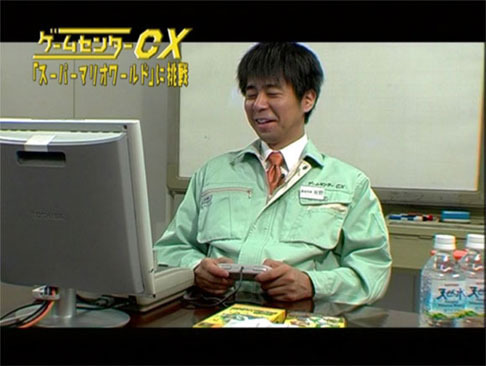
As I confessed in a previous entry, I enjoy watching people play video games. I don't know if it's because it evokes nostalgic memories of passing around the NES controller at sleepovers, or maybe I enjoy it for the same reason that normal people enjoy watching sports. Whatever the reason, I've spent countless hours watching YouTube videos of complete strangers documenting their video game playthroughs.
When I first started watching them, I remember thinking that this form of entertainment couldn't exist without the internet. It was to too weird and niche; I figured it just didn't have enough commercial potential to warrant mainstream production/distribution.
As it turns out, I was wrong. In 2003, Fuji TV introduced a show called Game Center CX in Japan. During its first season, GCCX resembled any old video game show, with developer interviews and game previews taking center stage.
Beginning with the second season, the focus changed, and the show began to center around the host's attempts to beat classic video games, from start to finish, in just a day (or occasionally, two or three days). The funny thing is, the host, Japanese comedian Shinya Arino, kind of sucks at games. He's just so cute and good-natured you can't help but cheer him on. I've been a fan of the show since I first discovered it five years ago.
I've always wanted to recommend the show to my video game loving friends in the States, but since it was in Japanese I always abstained. So I'm pleased to announce that the video game website Kotaku has started running episodes of the show with subtitles (and a somewhat irritating dubbed in English announcer). So check it out!
July 29, 2011
Aftershock: Artists Respond to Disaster in Japan
Aftershock is a global response to the disasters of March 2011 in northeast Japan. Over 30 contributors from around the world have donated their artwork and stories to this compilation. The project has two purposes, the first of which is to act as an open letter of support and concern to the people of Japan. The second purpose is to offer physical relief in the means of monetary support. 100% of the proceeds from the book will be donated to relief efforts in the disaster struck areas.
The editor of the book, Adam Pasion, has set up a Kickstarter campaign to fund the printing of the comic. It's a very worthy cause, so if you want to help Japan and get some great comics in the process, please consider donating:
http://www.kickstarter.com/projects/324352192/aftershock-artists-respond-to-disaster-in-japan
My own humble effort to the anthology was a four page comic I wrote about my formative years, and how they related to Japan:
http://aftershockcomic.blogspot.com/2011/07/lars-martinson-i-was-teenage-otaku.html
If you want to read the rest of it, you'll have to buy the book! :-)
July 22, 2011
Sorry But I Really Must Be Going
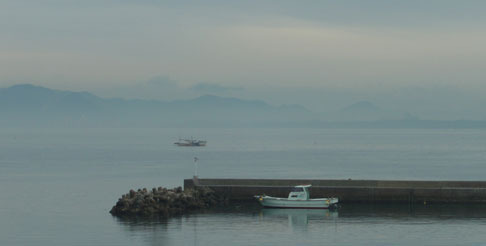
By the time this goes up, I'll be on my way to Japan (or possibly in Japan, depending on when you read it). Pretty exciting!
I've prepared four entries to automatically go up every Friday for the next four weeks, because I'm sure I'll be too busy to devote any time to the blog shortly after I arrive. After that, I'll probably resume timely updates, including entries about my new surroundings.
Well, I've still got preparations to tend to, so I'll leave it at this for now. Stay tuned!
****
Note: Since I'm in Japan, I'll no longer be able to offer inscribed copies of my books. However, I signed a few copies of each book before I left (about ten copies of each), so you can still get a signed copy from my store. "While supplies last" and all that!
July 10, 2011
"Tonoharu" YouTube Video
Here's a little video I made about Tonoharu.
Reminder! You can get copies of Tonoharu at 25% off the cover price through Friday! To order, go here:
http://larsmartinson.com/going-away-sale/
Also: this entry will count as my weekly Friday post (have a lot of packing and sorting to do, so don't have time to put up anything else).
Lars Martinson's Blog
- Lars Martinson's profile
- 24 followers



